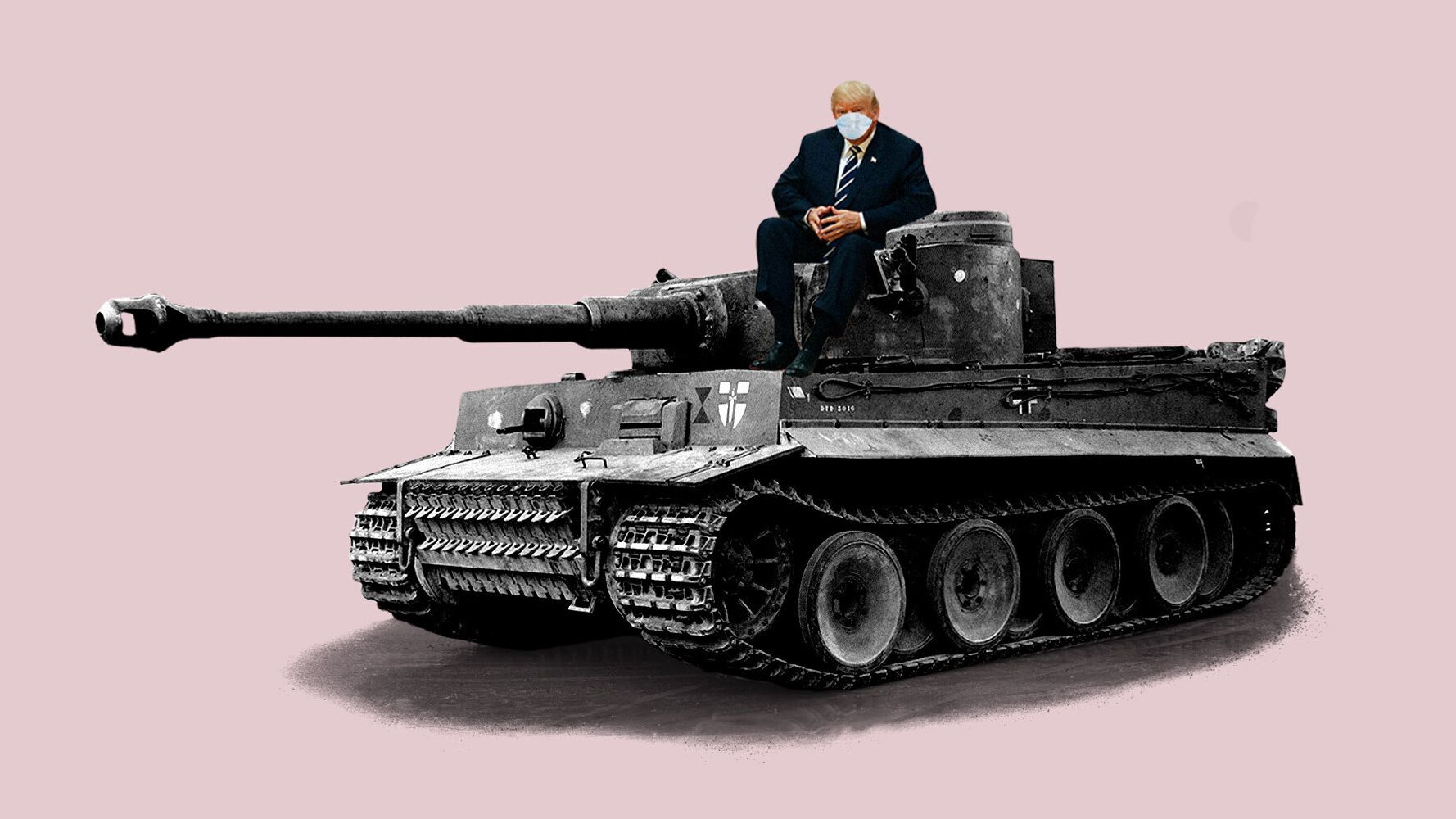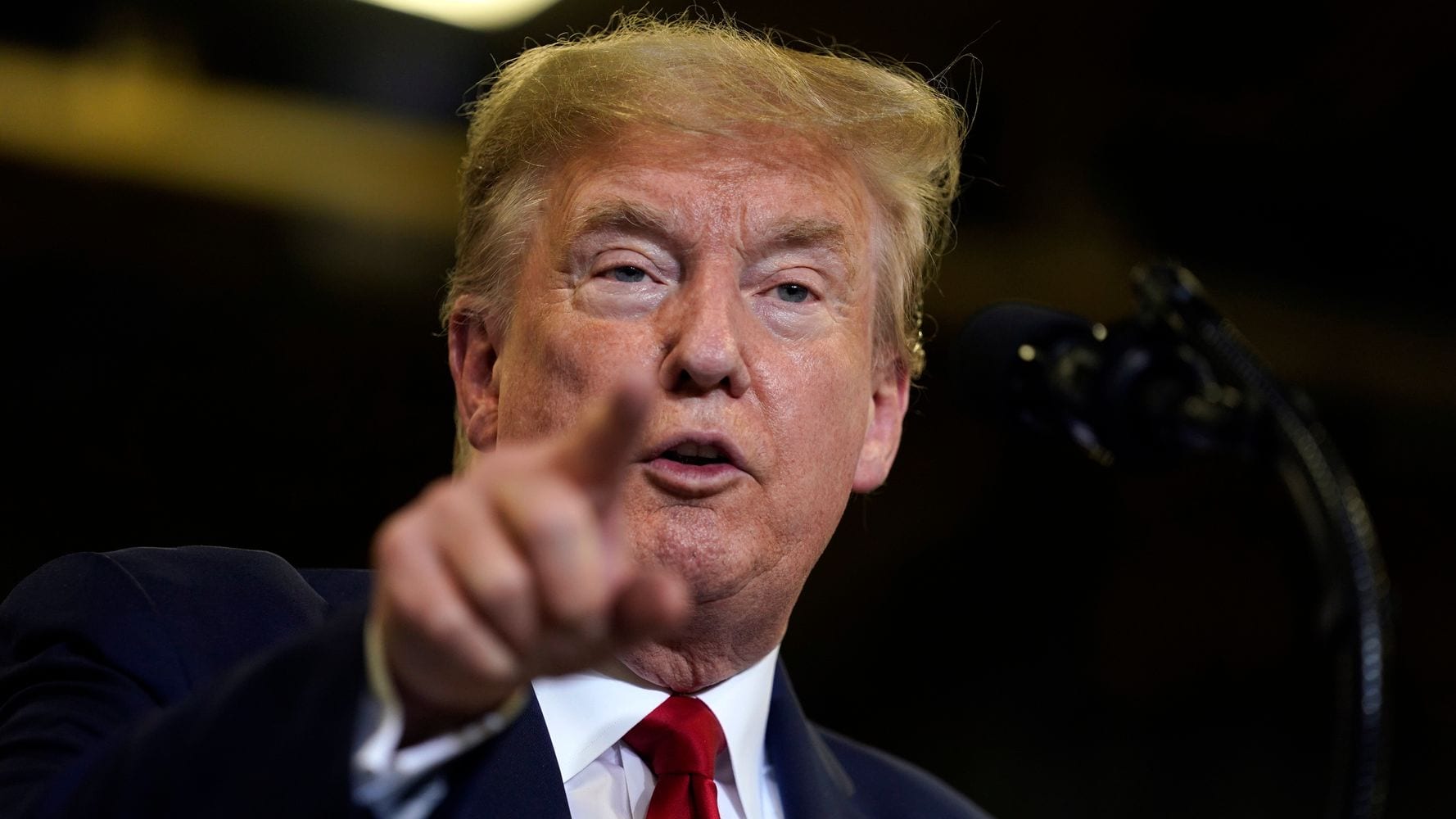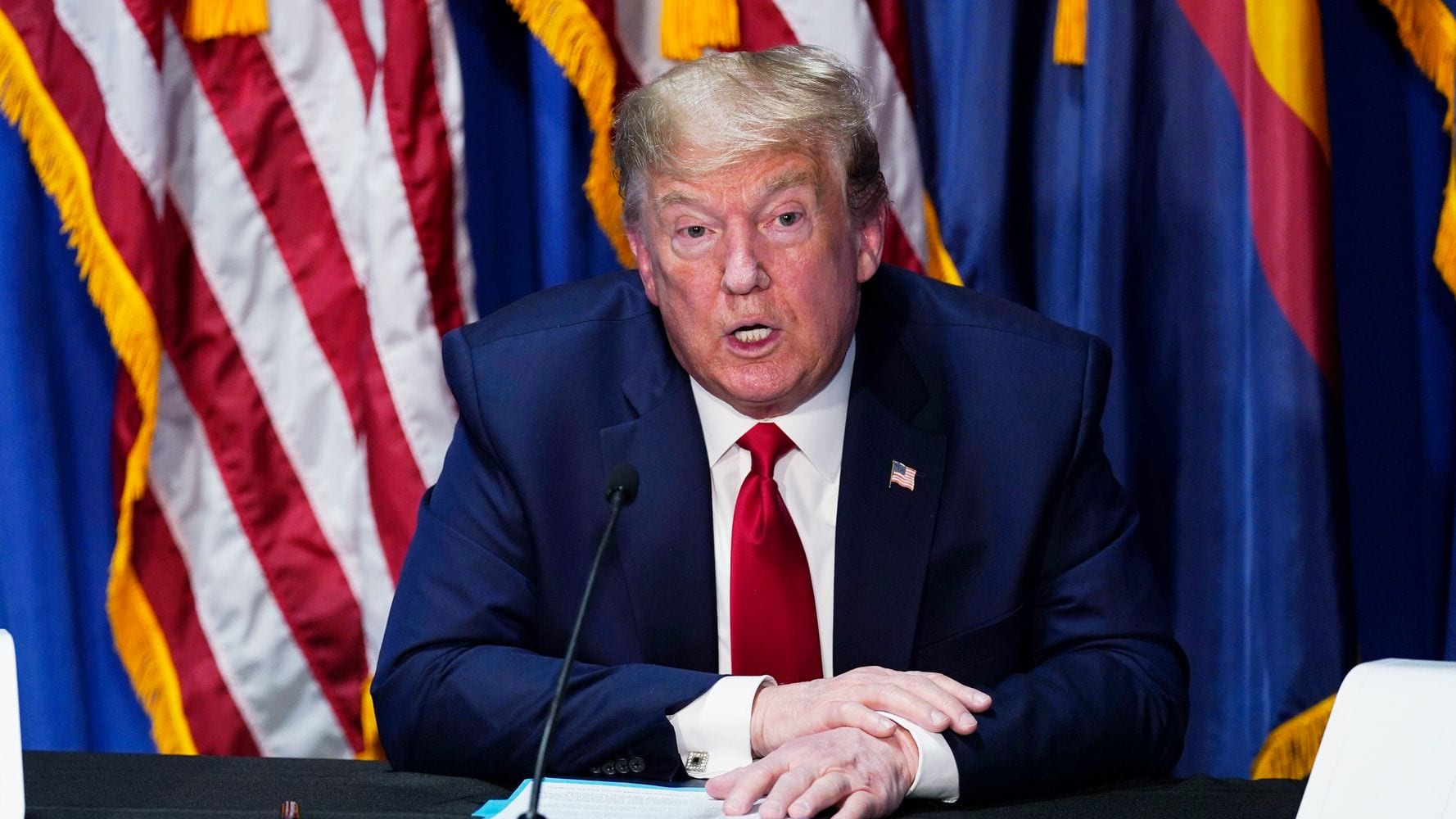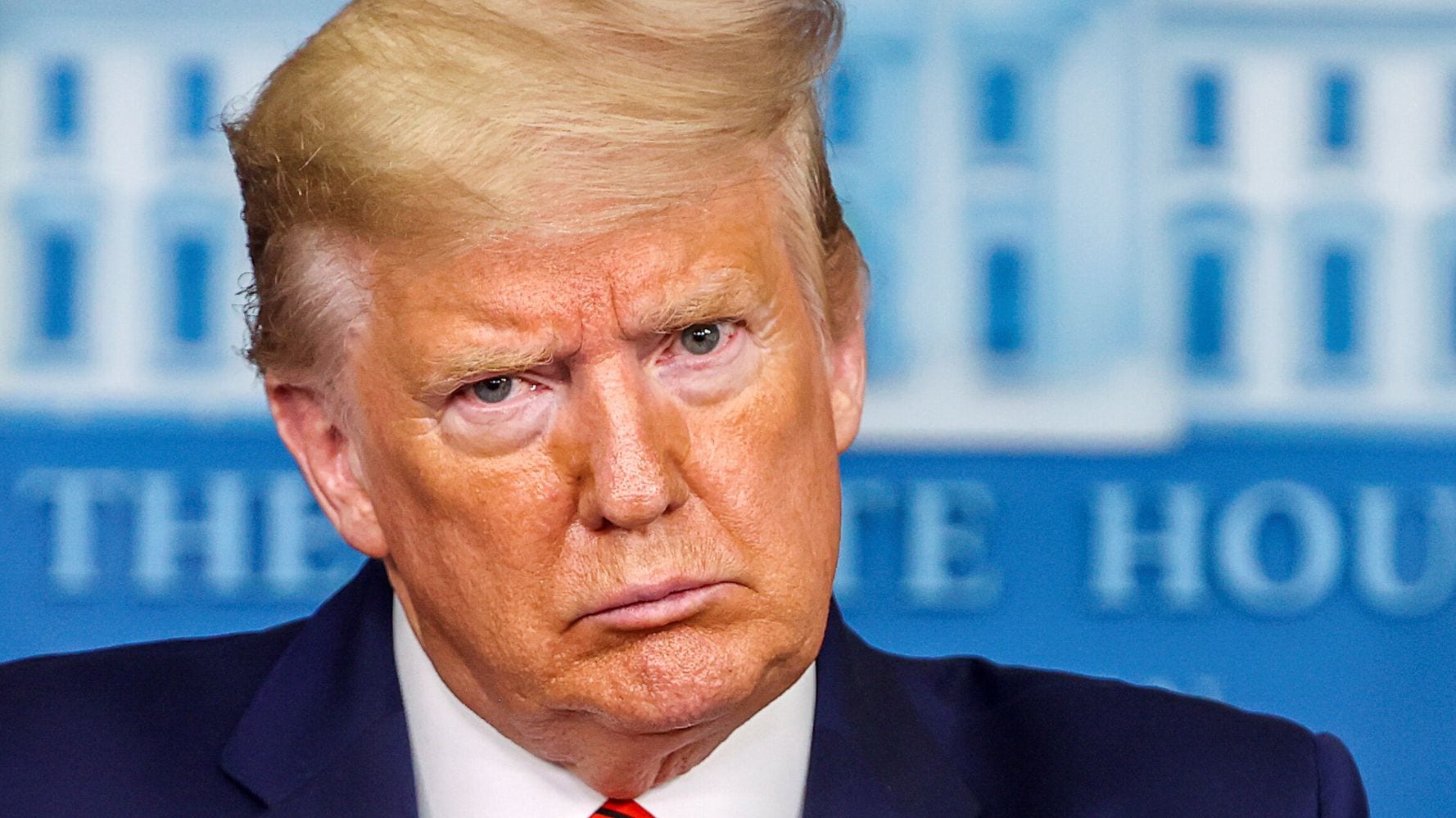[ad_1]
Leaders of both the Republican and Democratic parties agree that the pandemic that has shut down the nation’s economy and killed more than 23,000 people should be treated as though it were a war.
“I view it — in a sense as a wartime president,” President Donald Trump said on March 18 after claiming to invoke the Defense Production Act to ostensibly force private industry to produce ventilators to help hospitals cope with the flood of patients suffering from severe cases of illness.
“The president said this is a war. I agree with that. This is a war,” New York Gov. Andrew Cuomo, a Democrat whose state is the epicenter of the U.S. outbreak, concurred a few days later.
“We’re at war with the virus,” Joe Biden, the presumptive Democratic Party presidential nominee, said.
Metaphors are a constant in human discourse. They are often used in politics to help clarify a complicated situation for the general public in a manner favorable to the politicians making them.
“War-making is one of the few activities that people are not supposed to view ‘realistically’; that is, with an eye to expense and practical outcome,” social critic Susan Sontag wrote in her 1989 book “AIDS and Its Metaphors.” “In all-out war, expenditure is all-out, unprudent―war being defined as an emergency in which no sacrifice is excessive.”
This is how the war metaphor has been deployed in the U.S. over the last century, to ever-decreasing effectiveness. But the war metaphor is not only inapt to apply to a viral pandemic, it is dangerous.
The metaphor casts the “dreaded diseases” as “enemies are in modern war,” Sontag writes. “[T]he move from the demonization of the illness to the attribution of fault to the patient is an inevitable one, no matter if patients are thought of as victims. Victims suggest innocence. And innocence, by the inexorable logic that governs all relational terms, suggests guilt.”
Furthermore, while Congress passes never-before-seen multitrillion dollar emergency appropriations and the Federal Reserve revs up the money printer to help dull the economic shock caused by the pandemic, the Trump administration has not actually rallied the whole of society to fight the disease itself as though it were a war, as the historic use of the metaphor implies.
Some states may be doing their part, but the federal government doesn’t appear to actually have a plan to stop the spread of coronavirus. There’s been no mass mobilization to produce the medical equipment needed now on the front lines, nor the masks that will be needed if people want to reenter society before there’s a vaccine. There are no credible plans to develop widespread national testing capacity. And meanwhile, the death toll rises.
The Moral Equivalent Of War
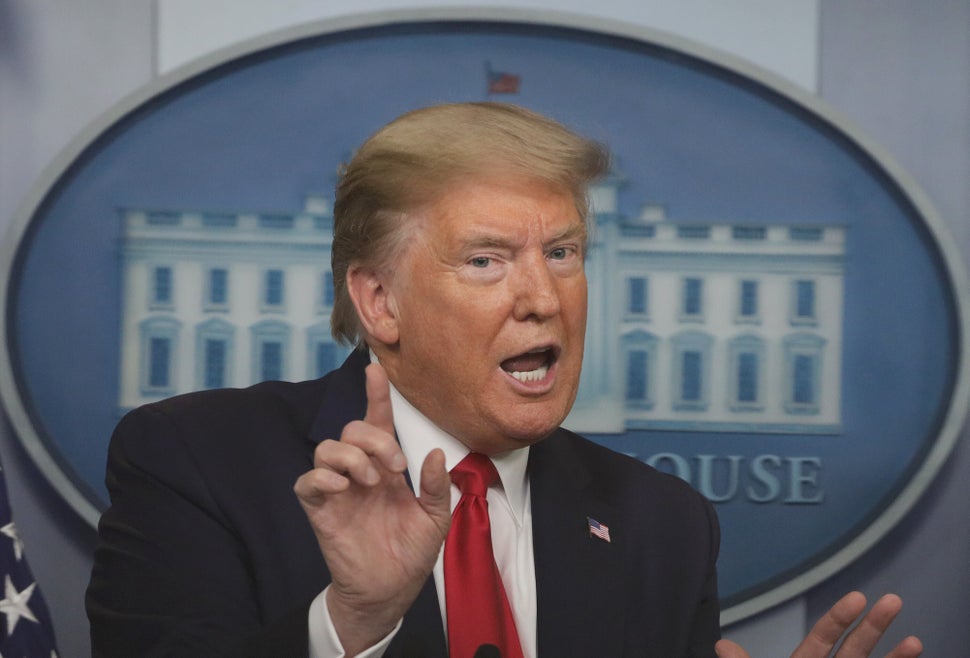
America has a long history of applying military metaphors to make sense of social problems. We have had wars on social problems from drug use, poverty, obesity, terrorism, energy dependence and hunger and wars on diseases like AIDS, cancer, syphilis and tuberculosis.
The war metaphor intends to motivate a national spirit of action to propel the whole of society to confront a problem as it would an existential threat of violence and conquest by a foreign nation. But the enemy is not a foreign nation with borders, armies and counter-propaganda. The enemy is either a concept that cannot understand defeat; or in the case of disease, a microbe, a virus or a cellular disorder. The coronavirus is “the invisible enemy,” according to Trump.
All of these war metaphors can trace their lineage to a 1906 speech, turned into a 1910 essay, by pragmatist philosopher William James titled “The Moral Equivalent of War.”
James’ speech came amid a global nationalist and militarist revival. American militarists, like President Theodore Roosevelt, argued that war and military organization were the only national endeavors that instilled true character in men. It hardened men and taught them to serve a higher force beyond their petty personal interest.
This was necessary, advocates of militarism argued, as the modern, industrial and cosmopolitan world created since the Civil War had confused, disordered, softened and feminized men. (They also argued it had confused and masculinized women.)
James was not a militarist. He counted himself among the “anti-war party.” But he agreed with their broader sentiment that war and military organization instilled character in men and in the nation. He also envisioned a much more active national government working to solve social problems. To bring about such a robust national government, he advocated that the same character and national spirit created from the brutality of war should be summoned for the peaceful mobilization of men to solve social problems for the nation.
“So far, war has been the only force that can discipline a whole community, and until an equivalent discipline is organized, I believe that war must have its way,” James wrote. “But I have no serious doubt that the ordinary prides and shames of social man, once developed to a certain intensity, are capable of organizing such a moral equivalent as I have sketched, or some other just as effective for preserving manliness of type. It is but a question of time, of skillful propagandism, and of opinion-making men seizing historic opportunities.”
It was a question of time, but it took an actual war ― World War I ― to make it happen. World War I showed what it looked like when the whole of society was forced to suborn their personal interests to war-fighting.
The Wilson Administration practically took over the entire economy. The profit motive was viewed as personal selfishness. Corporate executives were physically removed from their offices and their companies seized when they failed to comply with new pro-labor rules. The government also silenced speech sending anti-war activists Eugene Debs and Emma Goldman to prison and ran a propaganda bureau that would birth the modern advertising industry. But much of this was a temporary war effort and business returned to normal.
It was in the administrative agencies that ran the entire U.S. economy during World War I that the administrators and politicians who would launch the New Deal to combat the Great Depression cut their teeth. The Great Depression was a calamity that threatened the stability of the nation’s economy and its system of government. This is where James’ theory came to brief fruition.
President Herbert Hoover and his allies deployed the war metaphor as he struggled to respond to the depression, according to historian William Leuchtenberg in his 1964 essay, “The New Deal And The Analogue Of War.” But, even after reluctantly establishing the Reconstruction Finance Corporation, he was not keen to deploy its full potential. Unlike the progressives who saw in the war metaphor dreams of the national planning they instituted in World War I, Hoover remembered the patriotic spirit of voluntarism and the putting aside of domestic disputes between political parties and capital and labor. In this way, his use of the war metaphor served “a conservative function,” Leuchtenberg argued, “that of draining internal antagonisms onto a common national enemy.”
Franklin Roosevelt, who served as Assistant Secretary of the Navy during World War I, took a different approach. The depression constituted “a more grave emergency than in 1917,” he said in his 1932 “forgotten man” speech. He attacked Hoover’s “panic-stricken policy of delay and improvisation” as he argued for the nation to implement the kind of whole society policy “devised to meet the emergency of war 15 years ago.”
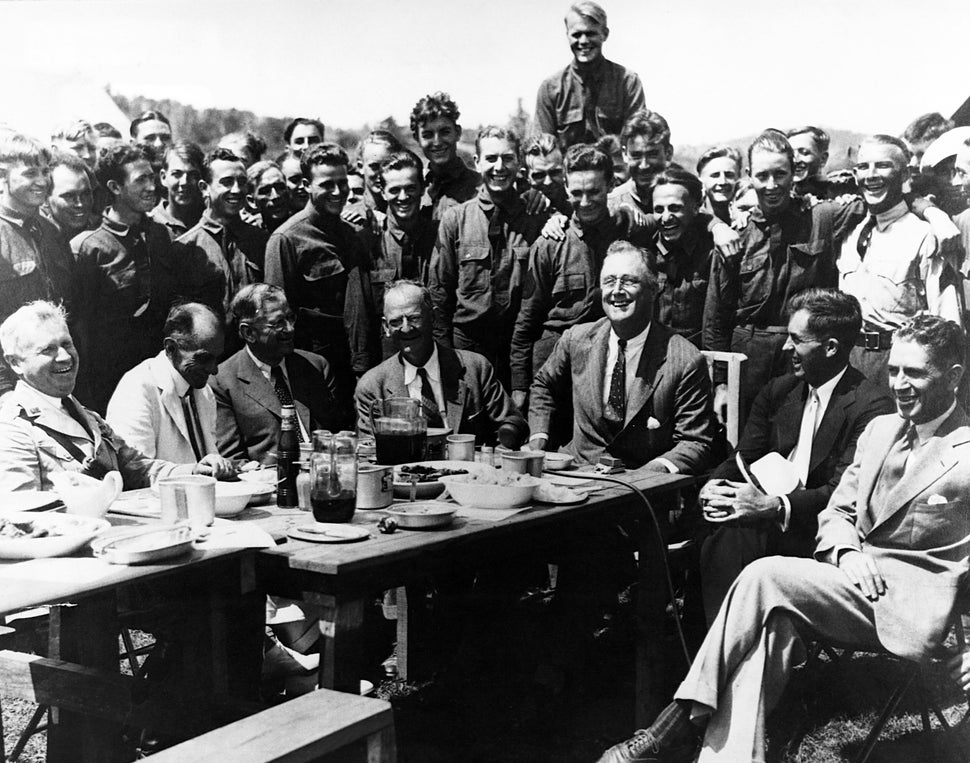
The country should treat the effort of reversing the depression, “as we would treat the emergency of a war,” Roosevelt said in his first inaugural. If Congress did not pass the measures he recommended then he would ask for, “broad Executive power to wage a war against the emergency, as great as the power that would be given to me if we were in fact invaded by a foreign foe.”
“It is important,” Rexford Tugwell, a member of Roosevelt’s “Brain Trust,” would later write about the early New Deal period, “that we should again explore the possibilities of what William James called the ‘moral equivalents’ of war.”
War metaphors, particularly by the many veterans of the World War I administrative agencies running new New Deal agencies, abounded throughout the first New Deal period. But they would soon lose their usefulness as the sense of national spirit to fight the depression succumbed to partisanship ahead of the 1936 election. Roosevelt also began to shunt aside his more militaristic advisors as the Supreme Court also invalidated some of the most sweeping, World War I-like agencies.
New Deal projects like the Tennessee Valley Authority, which was based on the World War I development of Muscle Shoals, and the Civilian Conservation Corps exemplified the war metaphor for peacetime mobilization for social needs. Future Democratic Party presidents John F. Kennedy and Bill Clinton echoed the call for a non-military national mobilization in their respective creations of the Peace Corps and Americorps.
The war metaphor would continue to be deployed for social problems like Lyndon Johnson’s War on Poverty and Richard Nixon’s War on Drugs. The war metaphor has not helped either succeed.
The metaphor reached its nadir when President Jimmy Carter directly invoked James’ theory by calling for the nation to treat the energy crisis of 1977 as the “moral equivalent of war.” But Congress took no action. The press took James’ historic phrase and turned it into an acronym. Carter’s failed policy would be known as “MEOW.”
Collateral Damage
Perhaps the overwrought use of James’ war metaphor since the Great Depression has made its deployment by Trump and other politicians of no use in the current crisis. Then again, they have barely even tried.
The jumbled federal government effort is subject to Trump’s addled whims. At one moment he’s a “wartime president,” at another, the threat is just a “hoax” perpetrated by his political opposition. American citizens should obey state government stay-at-home orders one minute, the next they should be ready to go to church on Easter Sunday.
Trump’s actions do not add up to a wartime mobilization. He has instead adopted the same conservative deference to private enterprise and voluntarism that Hoover took as he failed to deal with the depression. As with Hoover, his moves to use the power of his office have come either too-late or not at all. In other cases, he has personally thrown wrenches into the effort to stop the virus.
From the outset, Trump ignored the pandemic’s threat as he was solely concerned with his own personal private interest. He sought to suppress testing for the virus for fear positive test results would hurt his poll numbers, the performance of his private hotels, golf clubs and resorts and the stock market his rich friends and donors invest in. The current testing regime is not sophisticated enough for the country to vanquish the “invisible enemy.”
[T]he move from the demonization of the illness to the attribution of fault to the patient is an inevitable one, no matter if patients are thought of as victims. Victims suggest innocence. And innocence, by the inexorable logic that governs all relational terms, suggests guilt.
Susan Sontag, “AIDS and Its Metaphors”
When Trump did acknowledge the virus’ threat, he dithered. He appears afraid to use his power under the Defense Production Act to force companies to produce much-needed ventilators and personal protective equipment. He has characterized the act’s use as “nationalizing” private industry; it does not. The administration takes the Hooverian position of not wanting to be seen “putting the heavy hand of government down” on private industry, according to trade representative Peter Navarro.
Even worse, he has pitted the 50 U.S. states against one another as they seek to acquire the equipment needed to save lives and prevent the continued spread of the disease. The federal government has reportedly seized shipments of personal protective equipment and ventilators and given them to private companies to resell to the highest-bidding state. States have been wrangling gear from private sellers online, in China or wherever they can find them.
When Trump announces the federal government is sending equipment to a state, he does so only at the behest of members of his own political party, particularly those who face challenging reelection campaigns in November.
Without any kind of national effort to mobilize society to get out of this situation as the war metaphor would suggest, Trump and his allies are left with the grimier aspects of the metaphor: the wartime suppression of dissent and the identification of enemies and the guilty. This is Trump’s bread and butter.
Trump, Republican lawmakers and conservatives in the media have alternately blamed the press, the Chinese, Barack Obama and the World Health Organization for the president’s slow and confused response.
The president and his friends initially sought to label the virus as an external foreign invasion by calling it the “Chinese virus” or the “Wuhan virus.” A surge in hate crimes against Asian-Americans across the country led Trump to eventually drop his preferred eponym.
More recently, Sontag’s warning that the victims of the disease will become the targets of those seeking to wage metaphorical war on it. The latest conspiracy among Trump’s favorite TV personalities is that the coronavirus deaths are inflated because people who are old, obese or otherwise ill who died should not be included in the count.
“How many of those people had other health risks at play, though?” Fox News anchor Harris Faulkner said on April 8. “And maybe it wasn’t, in fact, COVID-19 that caused their death.”
“[W]e don’t really know for sure how many people are dying of coronavirus versus people that had underlying conditions that the coronavirus may have hastened,” Rush Limbaugh said on April 7.
At the root of this conspiracy theory is that the victims are actually to blame for their preexisting condition.
As Trump’s cheerleaders push to “reopen” the country, they aim to minimize the lives of those who may die as people start to congregate again. The elderly are asked to sacrifice themselves for the S&P 500. The ill are blamed for their own condition. The increasingly clear racial disparity in the virus’s victims could further harden the hearts of those who have long blamed Black Americans for any misery that befalls them.
In this view, the coronavirus victims receive the same dehumanizing treatment as the moral logic of our contemporary wars requires. Like civilians killed in drone strikes, they’re just numbers on a spreadsheet. Their lives don’t matter. Nor does their family’s grief. They are merely collateral damage.
A HuffPost Guide To Coronavirus
Calling all HuffPost superfans!
Sign up for membership to become a founding member and help shape HuffPost’s next chapter


